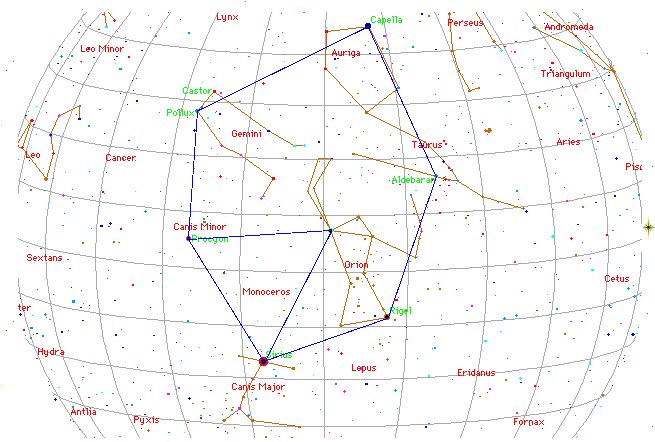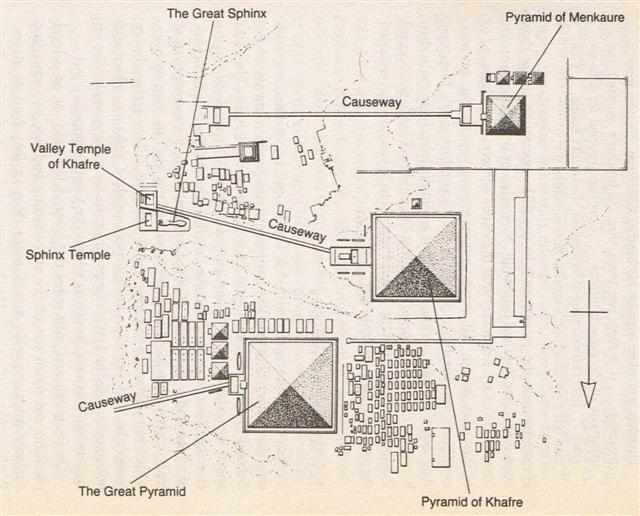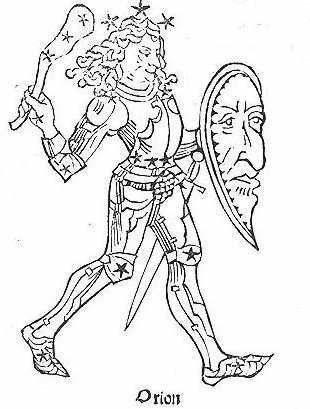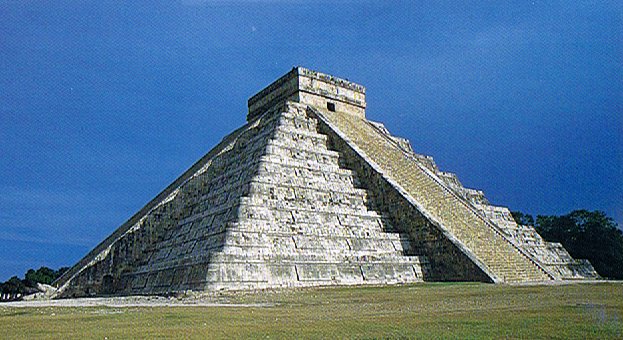Having stamped 5 days as the proper measure to be used ahead from the
cardinal points of the Sun we can guess this measure was used in order to dissect
the odd period of 37 days for the Sea journey of the
Explorers into 5 + 32.
Cursa ('76) + *5 = *81 (→ a leap year should have had March 21 as day 81).
Tthis was
immediately before
the beginning of Tau-toru (the 3 'stones' = stars)
constituting the
Belt of Orion.
Furthermore, March 21 (80) + *76 = 156 (= 2 * 78 = 13 * 12) and 156 + 5 =
161 (June 10) = 193 (Castor) - 32:

|
APRIL 1 (364 / 4 = 91) |
2 |
3 |
4 |
 |
 |
 |
 |
|
Gb5-23 |
Gb5-24 (148) |
Gb5-25 (378 = 364 + 14) |
Gb5-26 |
|
... The
ordinary year in the
previous Roman calendar
consisted of 12 months,
for a total of 355 days.
In addition, a 27-day
intercalary month, the
Mensis Intercalaris,
was sometimes inserted
between February and
March. This intercalary
month was formed by
inserting 22 days after
the first 23 or 24 days
of February; the last
five days of February,
which counted down
toward the start of
March, became the last
five days of
Intercalaris. The net
effect was to add 22 or
23 days to the year,
forming an intercalary
year of 377 or 378 days
... |
|
|
|
HAEDUS II = η Aurigae
(75.9) |
5h (76.1)
ε
Leporis (76.0),
CURSA
(Foot-stool) =
β
Eridani
(76.4),
λ
Eridani (76.7)
*35.0 = *76.4 - *41.4 |
μ Aurigae, μ Leporis
(77.6)
*35.0 + *1.0 = *37.0 -
*1.0 |
ĸ Leporis (78.0),
RIGEL
(Foot) =
β
Orionis
(78.1),
Flaming Star = IC405
(78.2),
CAPELLA
=
α
Aurigae
(78.4),
ο
Columbae,
τ
Orionis (78.8)
*37.0 = *78.4 - *41.4
THUBAN (α Draconis) |
|
Egyptian
water
ripples |
 |
Phoenician
mēm |
 |
Greek
mu |
Μ (μ) |
... Behind me, towering almost 100 feet into the air, was a perfect ziggurat, the Temple of Kukulkan. Its four stairways had 91 steps each. Taken together with the top platform, which counted as a further step, the total was 365. This gave the number of complete days in a solar year. In addition, the geometric design and orientation of the ancient structure had been calibrated with Swiss-watch precision to achieve an objective as dramatic as it was esoteric: on the spring and autumn equinoxes, regular as clockwork, triangular patterns of light and shadow combined to create the illusion of a giant serpent undulating on the northern staircase ...
|
|
|
...
In view of the almost
universal prevalence of
the Pleiades year
throughout the
Polynesian area it is
surprising to find that
in the South Island and
certain parts of the
North Island of New
Zealand and in the
neighboring Chatham
Islands, the year began
with the new Moon after
the yearly morning
rising, not of the
Pleiades, but of the
star Rigel in Orion ...
 |
|
June 4 (155 = 91 +
64) |
5 (2 * 78) |
6 (314 / 2) |
7 (94 + 64) |
|
°May 31 |
°June 1 (152 = 8 * 19) |
2 (*73) |
3 (94 + 60) |
|
'May 8 (128 = 2 * 64) |
9 |
10 (260 / 2) |
11 (94 + 37) |
|
"April 24 |
Vaitu
Nui 25 (115) |
26 (4 * 29) |
27 (94 + 23) |
|
APRIL 5 (365 + 95 = 460) |
6 |
7 |
 |
 |
 |
|
Gb5-27 (229 + 151 = 380) |
Gb5-28 |
Gb5-29 |
|
λ Aurigae (79.0), λ Leporis
(79.6), ρ Aurigae (79.7)
ARCTURUS (α Bootis)
|
Shur-narkabti-sha-iltanu-5
(Star in the Bull towards
the north)
σ
Aurigae (80.4),
BELLATRIX (Female Warrior) =
γ
Orionis, SAIF AL JABBAR
(Sword of the Giant) =
η
Orionis
(80.7),
ELNATH
(The Butting One) =
β
Tauri = γ Aurigae
(80.9) |
ψ
Orionis (81.1),
NIHAL (Thirst-slaking
Camels) =
β
Leporis
(81.7) |
|
June 8 (*444) |
9 (525) |
10 (161) |
|
... The month, which
takes its name from Juppiter the oak-god,
begins on June 10th and ends of July 7th.
Midway comes St. John's Day, June 24th, the
day on which the oak-king was sacrificially
burned alive. The Celtic year was divided
into two halves with the second half
beginning in July, apparently after a
seven-day wake, or funeral feast, in the
oak-king's honour ... |
|
°June 4 (*440) |
5 (521) |
6 (157) |
|
'May 12 (*52) |
13 (133) |
14 |
|
"April 28 (118 = 4 * 29) |
29 (*39) |
30 |
 |
|
APRIL 8 |
9 (99) |
10 (465) |
11 (*21) |
 |
 |
 |
 |
|
Gb6-1 (383) |
Gb6-2 |
Gb6-3 |
Gb6-4 (157) |
|
KHUFU
MINTAKA (Belt) = δ Orionis,
υ Orionis (82.4), χ Aurigae
(82.5), ε Columbae (82.6)
*41.0 = *82.4 - *41.4 |
KHAFRE
Al Hak'ah-3 (Brand) /
Mrigashīrsha-5 (Stag's Head)
/
Turtle Head-20 (Monkey) /
Mas-tab-ba-tur-tur (Little
Twins)
ARNEB
=
α
Leporis, Crab Nebula = M1
Tauri
(83.0,
φ¹
Orionis (83.1),
HEKA
=
λ
Orionis, Orion Nebula = M42
(83.2),
φ²
Orionis (83.6),
ALNILAM
(String of Pearls) =
ε
Orionis
(83.7) |
MENKAURE
Three Stars-21 (Gibbon) /
Shur-narkabti-sha-shūtū-6
(Star in the Bull towards
the south)
/
ANA-IVA-9 (Pillar of exit)
HEAVENLY GATE
=
ζ
Tauri,
ν
Columbae (84.0),
ω
Orionis (84.2),
ALNITAK
(Girdle) =
ζ
Orionis,
PHAKT
(Phaet) =
α
Columbae
(84.7) |
ο Aurigae (85.8), γ Leporis
(85.9)
YANG MUN (α Lupi) |

...
Menkaure was allegedly a
much more benevolent Pharaoh
than his predecessors.
According to legends related
by Herodotus, he wrote the
following: This Prince (Mycerinus)
disapproved of the conduct
of his father, reopened the
temples and allowed the
people, who were ground down
to the lowest point of
misery, to return to their
occupations and to resume
the practice of sacrifice.
His justice in the decision
of causes was beyond that of
all the former kings. The
Egyptians praise him in this
respect more highly than any
other monarchs, declaring
that he not only gave his
judgements with fairness,
but also, when anyone was
dissatisfied with his
sentence, made compensation
to him out of his own purse
and thus pacified his anger.
The Gods
however ordained that Egypt
should suffer tyrannical
rulers for a hundred and
fifty [150] years according
to this legend. Herodotus
goes on: ... An oracle
reached him from the town of
Buto, which said 'six
years only shalt thou live
upon this earth, and in the
seventh thou shalt end thy
days'. Mycerinus,
indignant, sent an angry
message to the oracle,
reproaching the god with his
injustice - 'My father and
uncle,' he said 'though they
shut up the temples, took no
thought of the gods and
destroyed multitudes of men,
nevertheless enjoyed a long
life; I, who am pious, am to
die soon!' There came in
reply a second message from
the oracle - 'for this very
reason is thy life brought
so quickly to a close - thou
hast not done as it behoved
thee. Egypt was fated to
suffer affliction one
hundred and fifty years -
the two kings who preceded
thee upon the throne
understood this - thou hast
not understood it'.
Mycerinus, when this
answer reached him,
perceiving that his doom was
fixed, had lamps prepared,
which he lighted every day
at eventime, and feasted and
enjoyed himself unceasingly
both day and night, moving
about in the marsh-country
and the woods, and visiting
all the places he heard were
agreeable sojourns. His wish
was to prove the oracle
false, by turning night into
days and so living twelve
years in the space of six
... |
And in the C text:
| tagata tuu
rima ki ruga |
te maitaki |
te henua |
Rei hata ia |
tagata rogo |
|
... the first month of the
Moriori year, was named Rongo (Lono).
On the first of the new year the Moriori
launched a small canoe to Rongo, although
they built and used only rude craft for their
fishing excursions. The canoe was manned by
twelve figures symbolizing the personifications
of the twelve months. Sometimes twenty-four
figures were placed in the canoe, and Skinner
interprets the additional twelve as representing
the female counterparts of the months. As an old
Maori once remarked. 'Everything has its female
counterpart ...
|
 |
|
Rogo |
|
 |
 |
 |
 |
 |
|
Ca3-21 (→ March 21 → Gregorian equinox) |
Ca3-22 (73) |
Ca3-23 |
Ca3-24 |
Ca3-25 (→ March 25→
Julian equinox) |
|
Hata.
1. Table, bureau. P Pau.: afata, a
chest, box. Mgv.: avata, a box, case,
trunk, coffin. Mq.: fata, hata, a
piece of wood with several branches serving as a
rack, space, to ramify, to branch; fataá,
hataá, stage, step, shelf. Ta.: fata,
scaffold, altar. 2. Hakahata, to
disjoint; hakahatahata, to loosen, to
stretch. P Pau.: vata, an interval,
interstice. Mgv.: kohata, the space
between two boards, to be badly joined;
akakohata, to leave a space between two
bodies badly joined; hakahata, to be
large, broad, wide, spacious, far off. Mq.:
hatahata, fatafata, having chinks,
not tightly closed, disjointed. Ta.: fatafata,
open. 3. Hatahata, calm, loose, prolix,
vast. Mgv.: hatahara, broad, wide,
spacious, at one's ease. Ta.: fatafata,
free from care. Mq.: hatahata, empty,
open. 4. Hatahata, tube, pipe, funnel.
Churchill. Sa.: fata, a raised house in
which to store yams, a shelf, a handbarrow, a
bier, a litter, an altar, to carry on a litter;
fatāmanu, a
scaffold. To.: fata,
a loft, a bier, a handbarrow, to carry on a
bier; fataki,
a platform. Fu.: fata,
a barrow, a loft; fatataki,
two sticks or canes attached to each other at
each side of a house post to serve as a shelf.
Niuē: fata,
a cage, a handbarrow, a shelf, a stage,
(sometimes) the upper story of a house. Uvea:
fata,
a barrow, a bier. Fotuna: fata,
a stage. Ta.: fata,
an altar, a scaffold, a piece of wood put up to
hang baskets of food on; afata,
a chest, a box, a coop, a raft, a scaffold.
Pau.: fata,
a heap; afata,
a box, a chest. Ma.: whata,
a platform or raised storehouse for food, an
altar, to elevate, to support. Moriori:
whata, a
raft. Mq.: fata,
hata,
hataá,
shelves. Rapanui: hata,
a table. Ha.: haka,
a ladder, an artificial henroost;
alahaka, a
ladder. Mg.: ata,
a shelf; atamoa,
a ladder; atarau,
an altar. Mgv.: avata,
a coffer, a box. Vi.: vata,
a loft, a shelf; tāvata,
a bier. The Samoan fata
is a pair of light timbers pointed at the ends
and tied across the center posts of the house,
one in front, the other behind the line of
posts; rolls of mats and bales of sennit may be
laid across these timbers; baskets or reserved
victuals may be hung on the ends. The litter and
the barrow are two light poles with small slats
lashed across at intervals. The Marquesan
fata is a
stout stem of a sapling with the stumps of
several branches, a hat tree in shape, though
found among a barehead folk. These illustrations
are sufficient to show what is the common
element in all these fata
identifications, light cross-pieces spaced at
intervals. With this for a primal signifaction
it is easy to see how a ladder, a raft, a
henroost, an altar come under the same stem for
designation. Perhaps Samoan fatafata
the breast obtains the name by reason of the
ribs; it would be convincing were it not that
the plumpness of most Samoans leaves the ribs a
matter of anatomical inference. Churchill 2.
... Teke said to Oti, 'Go and take
the hauhau tree, the paper mulberry tree,
rushes, tavari plants, uku koko
grass, riku ferns, ngaoho plants,
the toromiro tree, hiki kioe
plants (Cyperus vegetus), the sandalwood
tree, harahara plants, pua nakonako
plants, nehenehe ferns, hua taru
grass, poporo plants, bottle gourds (ipu
ngutu), kohe plants, kavakava atua
ferns, fragrant tuere heu grass,
tureme grass (Diochelachne sciurea),
matie grass, and the two kinds of
cockroaches makere and hata.'
... The division into quarters of a
28-series can be applied to the main phases of
the moon during the visible period as was as to
a (reflex of the old world?) sidereal month.
The separate subgroup (29 makere -
30 hata) consists of the names of two
types of cockroaches, but in related eastern
Polynesian languages these names can also be
explained on a different level. MAO. makere,
among others, 'to die', and whata, among
others, 'to be laid to rest on a platform',
deserve special attention.
The theme hinted at is one of death and
burial. In our scheme they occur at just that
time when the moon 'has died'! This lends
further support to the lunar thesis.
Barthel 2.

My glyph types Rei
and Rogo are the only ones whích are
characterized by Capital letters - as
inspired by the translations of Metoro Tau'a
Ure for Bishop Jaussen on Tahiti. At the
beginning (at the head) of a sequence of
words there should be a Capital letter.
|
 |
|
Rei |
|
|
CLOSE TO THE
FULL MOON: |
|
π4
Orionis (72.1), ο¹ Orionis (72.4), π5 Orionis
(72.8)
*31.0 = *72.4 - *41.4 |
π¹
Orionis (73.0), ο² Orionis (73.4),
HASSALEH = ι Aurigae
(73.6), π6 Orionis (73.9)
*32.0 = *73.4 - *41.4 |
ALMAAZ (The Male Goat) = ε Aurigae
(74.7),
HAEDUS I = ζ Aurigae
(74.8) |
HAEDUS II = η Aurigae
(75.9) |
5h
(76.1)
ε
Leporis (76.0),
CURSA
(Foot-stool) =
β
Eridani
(76.4),
λ
Eridani (76.7)
*35.0 = *76.4 - *41.4 |
|
"April 21 (112 = 81 + *31) |
22 |
23 |
24 |
Vaitu Nui 25 (116) |
| kua tupu te
rakau |
kua tupu - te
kihikihi |
te hau tea |
 |
 |
 |
|
Ca4-1 (77) |
Ca4-2 |
Ca4-3 |
|
CLOSE TO THE
FULL MOON: |
|
μ
Aurigae, μ Leporis (77.6) |
ĸ
Leporis (78.0),
RIGEL
(Foot) = β Orionis
(78.1),
Flaming Star = IC405
(78.2),
CAPELLA
= α Aurigae
(78.4), ο Columbae, τ Orionis (78.8)
*37.0 = *78.4 - *41.4
THUBAN
(α Draconis)
|
λ
Aurigae (79.0), λ Leporis (79.6), ρ Aurigae
(79.7)
ARCTURUS (α Bootis)
|
|
June
6 (157 = 314 / 2) |
7
(*78) |
8 (4
* 29½ + 41) |
|
"April 26 (117 = 157 - 40) |
27
(472 / 4) |
28 |
 |
| tagata -
te rau hei |
te
hokohuki i te moko |
te rau hei |
e gagata
hakaariki |
manu |
te rau hei |
|
Rau
hei.
1. Branch of mimosa. 2. Killed enemy. 3.
Hanged 'fish'. 'Branche
du mimosa (signe de mort), ennemie túe
(poisson suspendu)' according to
Jaussen. Barthel. |
 |
 |
 |
 |
 |
 |
|
Ca4-4 |
Ca4-5 |
Ca4-6 |
Ca4-7 |
Ca4-8 (84) |
Ca4-9 |
|
CLOSE TO
THE FULL MOON: |
|
Shur-narkabti-sha-iltanu-5 (Star in the Bull
towards the north)
σ
Aurigae (80.4),
BELLATRIX (Female Warrior) =
γ
Orionis, SAIF AL JABBAR (Sword of the Giant)
=
η
Orionis
(80.7),
ELNATH
(The Butting One) =
β
Tauri = γ Aurigae
(80.9) |
ψ
Orionis (81.1),
NIHAL (Thirst-slaking Camels) =
β
Leporis
(81.7) |
KHUFU
MINTAKA
(Belt) =
δ
Orionis,
υ
Orionis (82.4),
χ
Aurigae (82.5),
ε
Columbae (82.6)
*41.0 = *82.4 - *41.4 |
KHAFRE
Al Hak'ah-3 (Brand) /
Mrigashīrsha-5 (Stag's Head) /
Turtle Head-20 (Monkey) / Mas-tab-ba-tur-tur (Little Twins)
ARNEB
= α Leporis, Crab Nebula = M1 Tauri
(83.0,
φ¹
Orionis (83.1),
HEKA
= λ Orionis, Orion Nebula = M42
(83.2),
φ²
Orionis (83.6),
ALNILAM
(String of Pearls) = ε Orionis
(83.7) |
MENKAURE
Three Stars-21 (Gibbon) /
Shur-narkabti-sha-shūtū-6 (Star in the Bull
towards the south)
/ ANA-IVA-9
(Pillar of exit)
HEAVENLY GATE
= ζ Tauri,
ν
Columbae (84.0),
ω
Orionis (84.2),
ALNITAK
(Girdle) = ζ Orionis,
PHAKT
(Phaet) = α Columbae
(84.7) |
ο Aurigae (85.8), γ Leporis (85.9)
YANG MUN (α Lupi)
|
|
June 9 |
10 (161) |
11 |
12 |
13 |
14 |
|
... The month, which
takes its name from Juppiter the oak-god,
begins on June 10th and ends of July 7th.
Midway comes St. John's Day, June 24th, the
day on which the oak-king was sacrificially
burned alive. The Celtic year was divided
into two halves with the second half
beginning in July, apparently after a
seven-day wake, or funeral feast, in the
oak-king's honour ... |
|
'May 13 |
14 |
15 |
16 (136) |
17 |
18 |
|
"April 29 |
30 |
May 1 (11 * 11) |
2 |
3 |
4 |
The procedure of making a king (haka-ariki)
could have begun at Cursa in order to be completed
at the String of Pearls:
|
 |
 |
4 |
 |
 |
|
CURSA
|
Gb5-25 |
MINTAKA
|
ALNILAM |
... This male and chiefly
water (semen) in the womb of a kava bowl
whose feet are called 'breasts' (sucu),
and from the front of which, tied to the upper
part of an inverted triangle, a sacred cord
stretches out toward the chief ... The cord is
decorated with small white cowries, not only a
sign of chieftainship but by name, buli leka,
a continuation of the metaphor of birth -
buli, 'to form', refers in Fijian
procreation theory to the conceptual acception
of the male in the body of the woman. The
sacrificed child of the people will thus give
birth to the chief. But only after the chief,
ferocious outside cannibal who consumes the
cannibalized victim, has himself been sacrificed
by it. For when the ruler drinks the sacred
offering, he is in the state of intoxication
Fijians call 'dead from' (mateni) or
'dead from kava' (mate ni yaqona),
to recover from which is explicitly 'to live' (bula
[hura]). This accounts for the second
cup the chief is alone accorded, the cup of
fresh water. The god is immediately revived,
brought again to life - in a transformed state
...
.jpg)
|























.jpg)